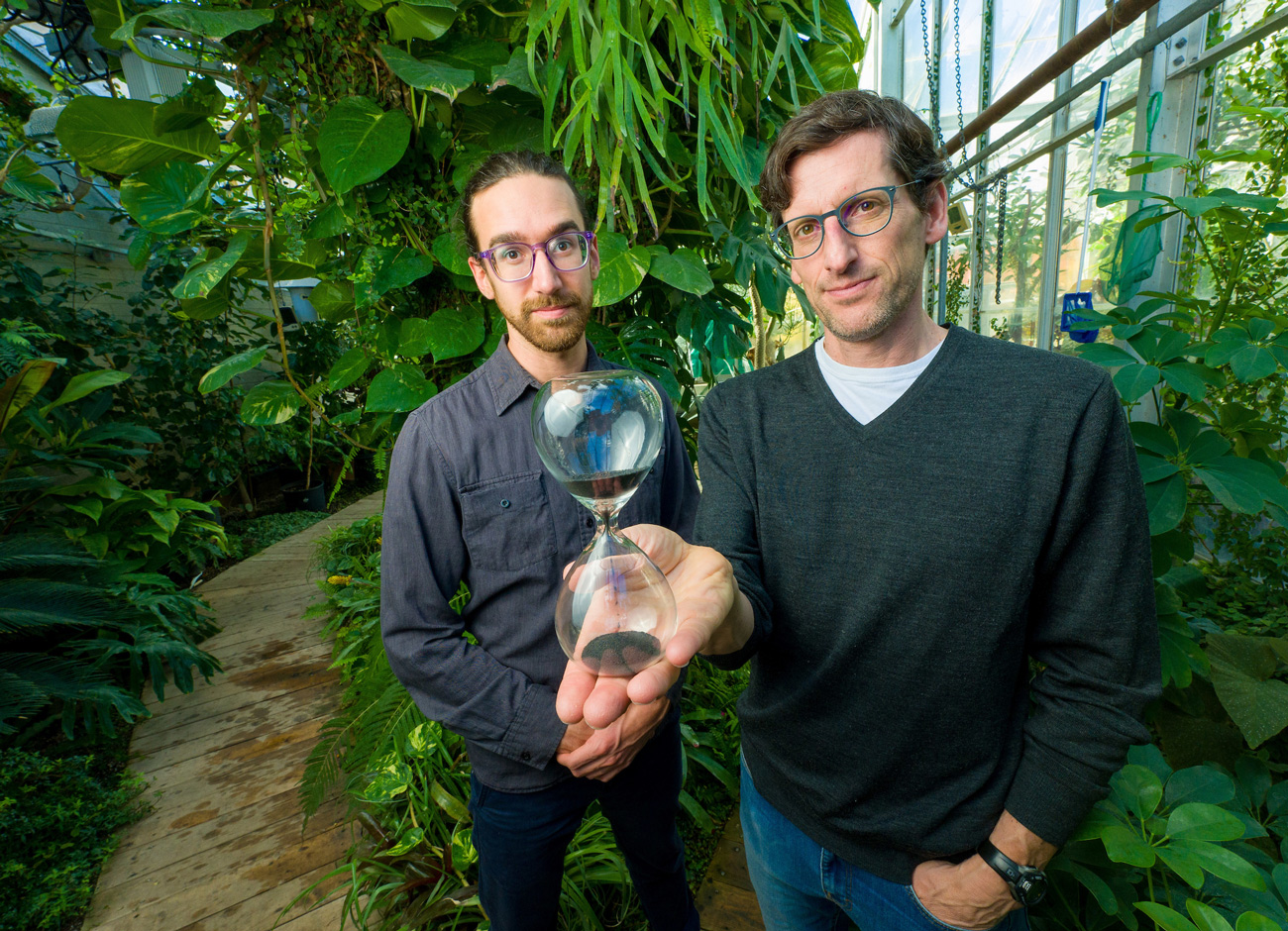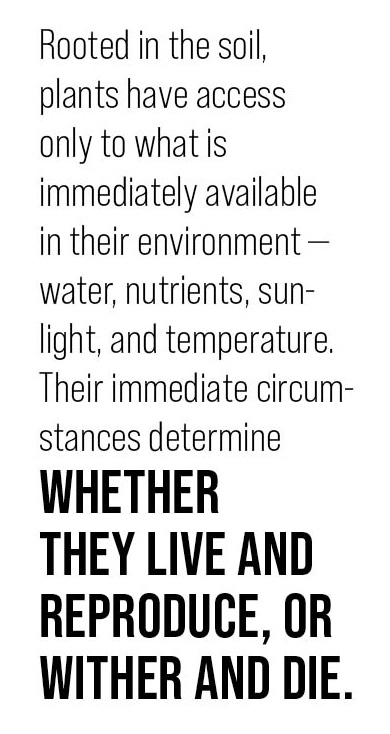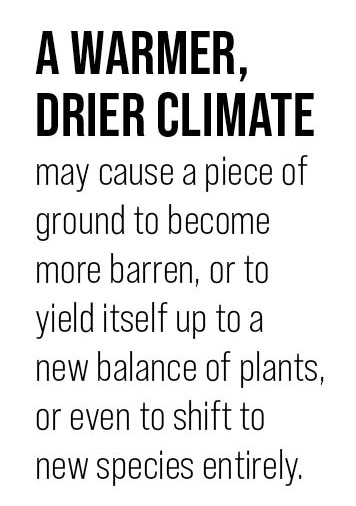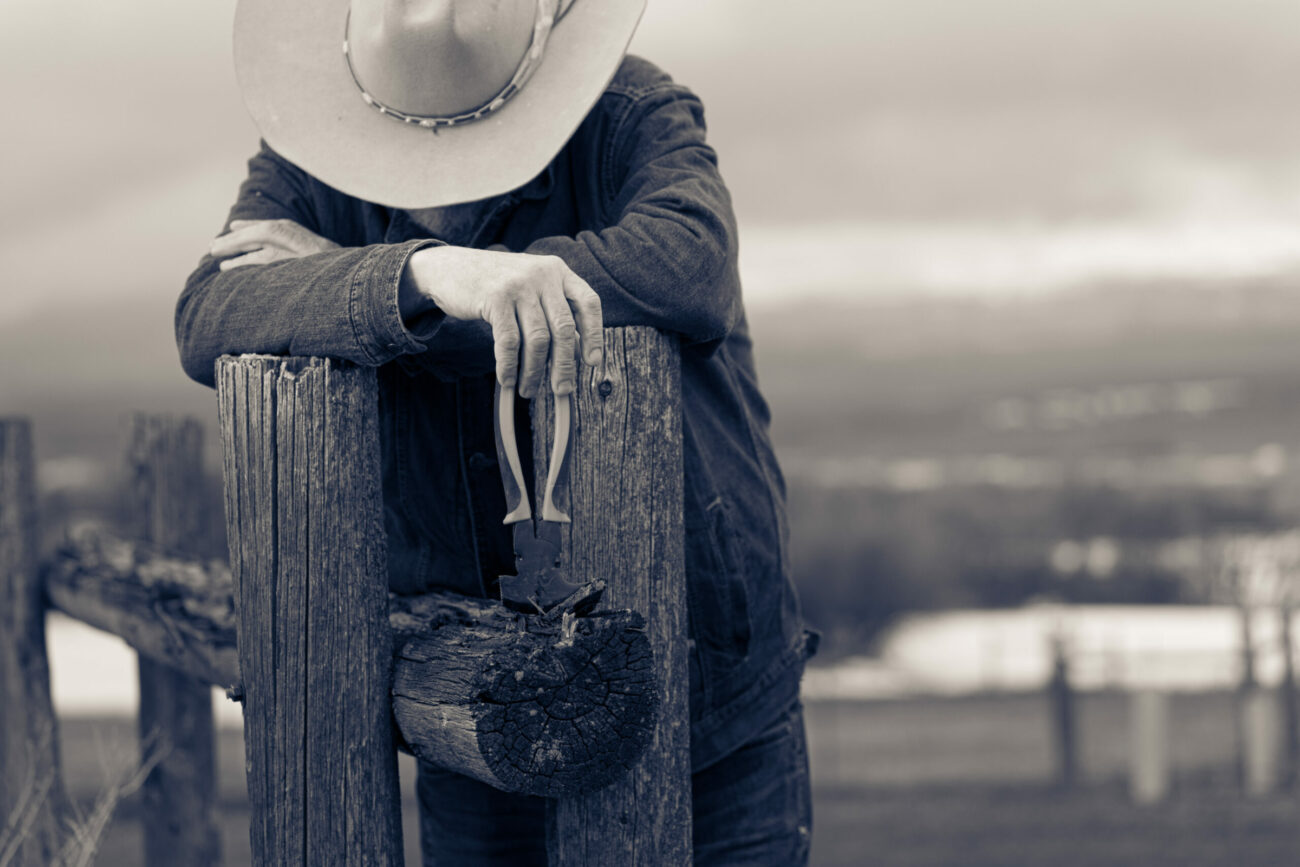Catching Up to Climate Change By Tracking Big-Picture Patterns

If plants were a bit more ambulatory, Peter Adler and Michael Stemkovski might find their work to be a bit less urgent.
If whenever the weather got too hot or dry, crested wheatgrass, yellow rabbitbrush and silvery groves of quaking aspen could choose to wriggle their extremities out of the soil and wander upslope to more hospitable environments, plants like these might have a better chance at surviving climate change. But, of course, they can’t.
It’s actually the tedious immobility of plants that these two researchers find most fascinating. Adler, a plant ecologist in S. J. and Jessie E. Quinney College of Natural Resources and Stemkovski, a Ph.D. student from the Department of Biology, investigate how a changing climate is transforming vegetation across landscapes in the West. They have a captive audience with plants.

Rooted in the soil as they are, plants have access only to what is immediately available in their environment — water, nutrients, sunlight, and temperature. Their immediate circumstances determine whether they live and reproduce, or wither and die. Even seemingly small tweaks in these basic elements have the potential to trigger a landscape-level demise for entire swaths of grasses, shrubs and trees, says Stemkovski. Or to nudge their progenitors, over several plant-lifetimes, higher up a mountain or farther north or in a quest for a more comfortable habitat.
“Climate is what determines whether plants can live in any particular spot on the map,” says Adler. “It’s the reason, for instance, that there are plenty of trees on a north-facing slope in Logan Canyon, and fewer on a south-facing one. Why grasses might flourish in one meadow, and completely die off in another.”
It’s more difficult for plants to adjust to a quickly changing climate than it is for other living things … at least in the short term, says Stemkovski. Humans can turn on air conditioning. Animals can move (to some degree) to a more hospitable environment. Plants are stuck. This alone makes the shifts in plant populations so very telling when it comes to deciphering the impacts of a future climate.
Almost every place on earth is getting warmer. Plants and trees are feeling the pinch of this change in a multitude of ways, says Adler. Snow cover is decreasing; flowers are budding out earlier; trees are shifting their seasonal patterns. Some lucky plant species fare comparatively well because they have greater ‘plasticity’ — an innate genetic capacity for flexibility that allows them to adapt to new circumstances, perhaps growing slightly smaller to require less water in a given season, or to endure a little longer under a hotter summer sun.
As the climate changes, researchers like Adler and Stemkovski are working to understand how a thousand tweaks to the plant community might impact ecosystems as a whole. The task is as difficult as it sounds — like trying to determine a car’s gas mileage for a thousand-mile trip after you replace one cup of gasoline with chicken soup. There are plenty of uncertainties. But it’s also a vital topic to explore, especially in the 30 to 50-year timeframe in which these researchers work.
Ecosystems respond to climate changes through factors spanning a range of timescales. Seasonally based changes such as timing of plant germination are fairly easy for ecologists to observe and track. But longer-term conundrums aren’t so straightforward. Natural ecosystems have feedback loops and complex interactions that might throw the aforementioned car onto a completely unexpected, uphill, and boulder-strewn track. Evolutionary adaptations, plant dispersal, and things like wildfire and insect infestations, as well as biogeochemical cycles, may not play out for decades or even centuries after the climate begins to shift, says Adler. Given enough time, all these components will eventually adjust to warmer conditions. The problem is that we don’t know how long that will take, he says.

In the meantime, the benefits that ecosystems provide to society, like forage for wild and domestic animals, may erode.
The strategy the team is using to tackle this topic is to take a giant step back, and to analyze the landscape from a metaphorical and literal distance. Adler and Stemkovski use satellite imagery to track and project ‘net primary productivity’ — the total amount of plant life any given landscape produces. This is an important factor to understand, not just for grazing cattle and wildlife, but to determine ecological consequences of climate change that will occur over long periods of time as the disequilibrium between plants and climate increases, and eventually settles.
A warmer, drier climate may cause a piece of ground to become more barren, or to yield itself up to a new balance of plants, or even to shift to new species entirely. It could trigger some landscapes such as (currently) frozen tundra to thaw and begin producing more total plant mass. The shift might feedback on itself … a warming landscape that invites darker-colored plants could exacerbate further warming and drying by absorbing more sunlight. Adler and Stemkovski are using historical satellite data to develop a model for predicting what might happen across the big picture as the climate begins making these changes.
Their model suggests that the rate at which ecosystems respond to climate change is a critical and overlooked component to reduce uncertainty about future projections. When a model assumes that ecosystems will respond very slowly to climate change, it tends to project widespread decreases in net primary productivity in the western U.S. as soon as 2100. When it assumes a rapid adjustment, a model often predicts an increase in net productivity. The gap between these two scenarios shows how much work we still have to do to improve our understanding of big-picture patterns, Adler explains.
Understanding and predicting the impacts of climate change on biodiversity and ecosystem function is now a primary focus of ecological research. Human-caused changes to the climate are quickly disrupting relationships between plants and the natural world that took millennia to develop. We won’t really understand how the natural world will ultimately respond to the (relatively) lightning-fast jolt of human-caused climate change for centuries or more. The best we can do for now, Adler says, is to recognize the uncertainties and do our best to help ecosystems adapt to the shock.





